A Five-Question Interview
/Although author Nancy Blanton may not be a household name yet, after reading her intriguing novel The Earl in Black Armor we think that may very well change in the near future.
Read MoreInternational Award-Winning Author
Although author Nancy Blanton may not be a household name yet, after reading her intriguing novel The Earl in Black Armor we think that may very well change in the near future.
Read MoreThese two members of feuding Anglo-Irish families were actually cousins, and made an unlikely couple until events shifted, ultimately allowing a marriage of choice rather than arrangement.
Read MoreCharles II valued many things, including art, architecture, ships and science, but above all he had “an absolute commitment to his own survival.”
Read MoreMallow Castle has large mullioned windows, loopholes for muskets, and fireplaces in each room that stir the imagination. Who once warmed their hands or dried their clothes there, and what did they think about?
Read More
Today I begin a series featuring sites I visited in Ireland while researching my second novel, The Prince of Glencurragh. This book takes place in mid-17th century Ireland, when castle towers are losing their significance and the order of the day for the rich and powerful is a grand, fortified manor house that demonstrates their wealth and importance. I had mapped out 15 locations prior to my trip, so the series will cover each of these. Readers of The Prince can follow along using the map included in the book. I ended up using nearly all of the locations in some way, whether as an actual location for a scene in the story, or to inform something else.
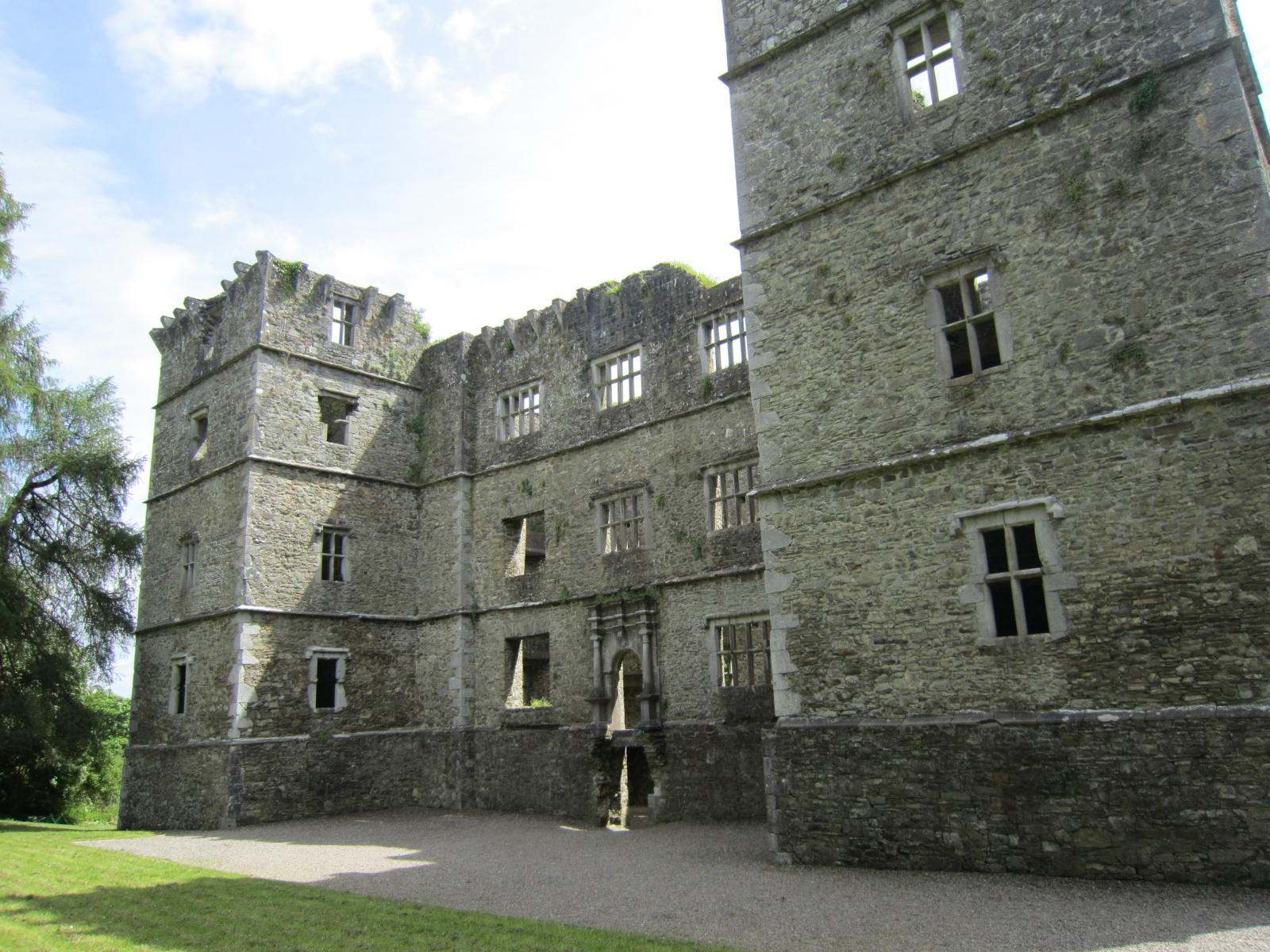 Kanturk Castle was my first stop after arriving in Shannon. The structure inspired my vision for Castle Glencurragh, a fictitious castle near Skibbereen, County Cork, which is the dream and ambition of the protagonist.
Kanturk Castle was my first stop after arriving in Shannon. The structure inspired my vision for Castle Glencurragh, a fictitious castle near Skibbereen, County Cork, which is the dream and ambition of the protagonist.
Kanturk Castle is situated in north County Cork, just off the N72 about nine miles west of Mallow, along the Dalua river, a tributary of the Blackwater. It is named for the nearby market village Kanturk that existed centuries before the castle. While the name sounds exotic and mysterious, it actually means “the boar’s head” (from the Gaelic Ceann Tuirc).
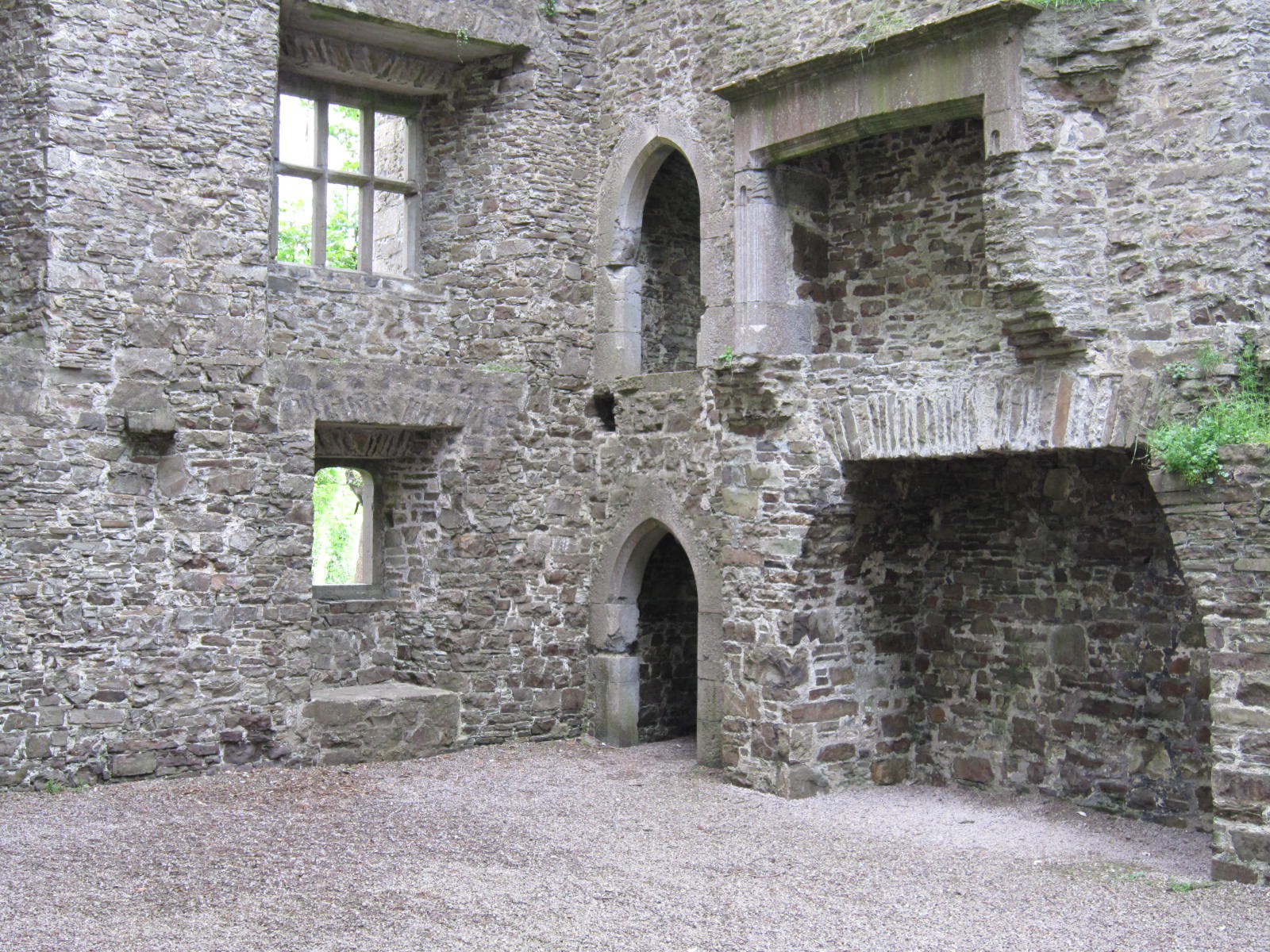 To me, the remarkable thing about this enormous and beautiful fortified manor house, and why I felt compelled to see it, is that it was the envy of all who saw it during construction, and yet it was never completed.
To me, the remarkable thing about this enormous and beautiful fortified manor house, and why I felt compelled to see it, is that it was the envy of all who saw it during construction, and yet it was never completed.
Built by Dermot McDonagh MacCarthy starting around 1609, it is rectangular with corner towers standing five stories high. It is filled with magnificent fireplaces on each floor, large mullioned windows, arched doorways and a striking main entrance with Ionic columns on each side.
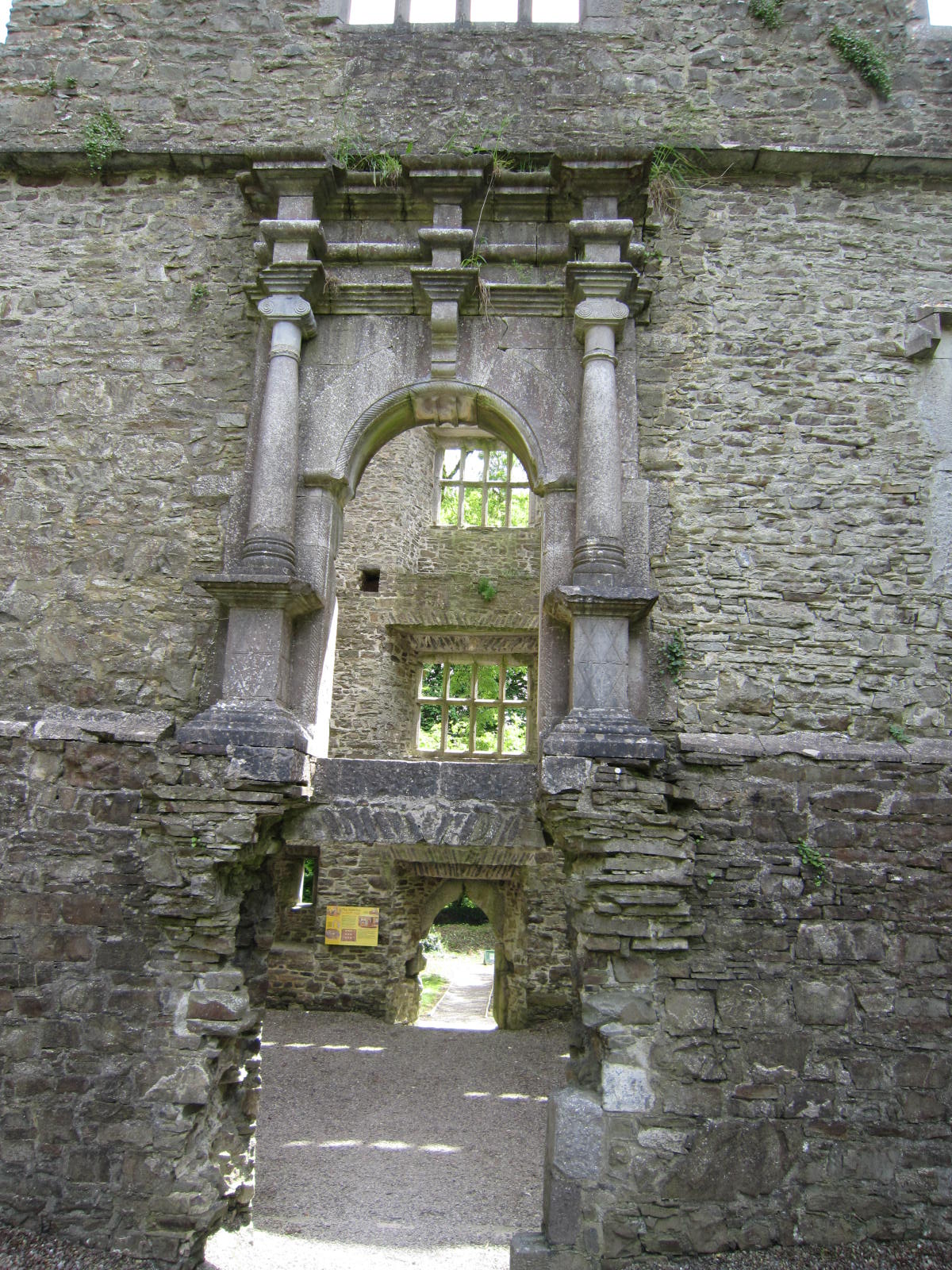 (For a very detailed account of the castle with far better photos than mine, please see The Irish Aesthete.)
(For a very detailed account of the castle with far better photos than mine, please see The Irish Aesthete.)
One legend about the castle is that all the stonemasons happened to be named John, and so originally the castle was known as Carrig-na-Shane-Saor (the Rock of John the Mason). Another story I came across was that during construction, MacCarthy needed free labor, so he and his men snagged travelers passing by, put them to work as slaves, and would not release them until they had worked on the castle for a year.
Why the castle was never completed remains something of a mystery. Some accounts claim that English settlers were concerned that the size and fortification of the castle signaled more rebellion from the Irish, and the Privy Council of England halted construction. MacCarthy was so incensed, he had the blue tiles on the castle roof torn away and thrown into a stream. Other accounts hold that MacCarthy simply ran out of money to continue.
When MacCarthy’s son, Dermot Oge, succeeded him, Kanturk and the lands around it were heavily mortgaged. Dermot and his own son were killed during a Cromwellian battle in 1652, and at the end of the confederate war Kanturk Manor was awarded to Sir Phillip Perceval, an English Protestant. Sir Phillip’s descendant, Sir John Perceval, was a successful parliamentarian, named Baron of Burton, County Cork, in 1715, Viscount Perceval of Kanturk in 1722, and Earl of Egmont in 1733.
And this brings me to a very personal connection to the story.
In 1932, Kanturk was donated to the National Trust by Lucy, Countess of Egmont, the widow of the 7th Earl of Egmont who was killed in a car crash in England. Her conditions were that the castle be kept as a ruin, as it was at time of hand-over. It is designated as a national monument.
When I visited, I saw a lovely, well-kept place where the locals walk their dogs, just as I often walk my dogs along a beautiful street with a beautiful name: Countess of Egmont—on an island more than 4,000 miles away.
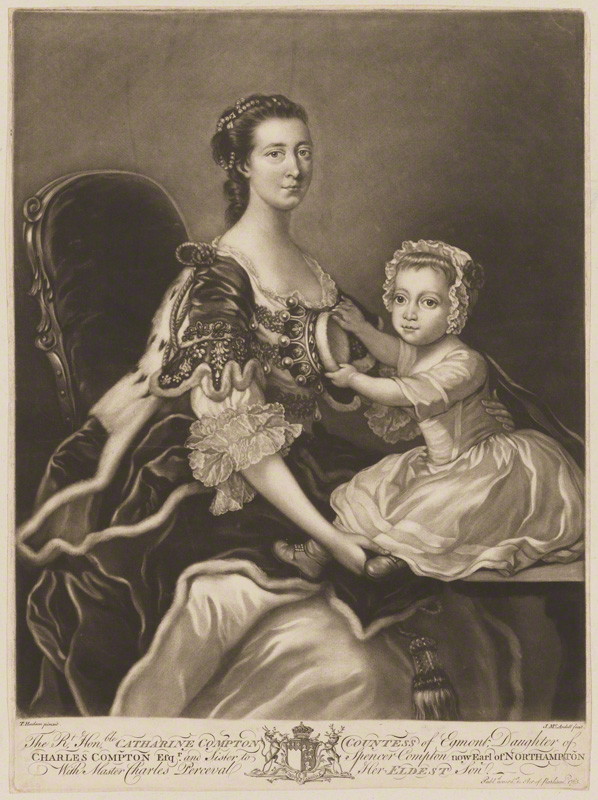
It turns out that Sir John Perceval, the 5th Baronet of Kanturk and the 2nd Earl of Egmont, obtained a king's grant for properties in northeast Florida during a brief period around the 1770s, when Spain ceded the lands to Britain in an exchange for lands elsewhere. Amelia Island was then called Egmont Island, where the Earl and Lady Egmont owned a large indigo plantation. The island was later renamed Amelia in honor of the daughter of King George II of England.
The portrait: Catherine Perceval (née Compton), Countess of Egmont; with Charles George Perceval, 2nd Baron Arden; by James Macardell, after Thomas Hudson, mezzotint, published 1765, NPG D2382
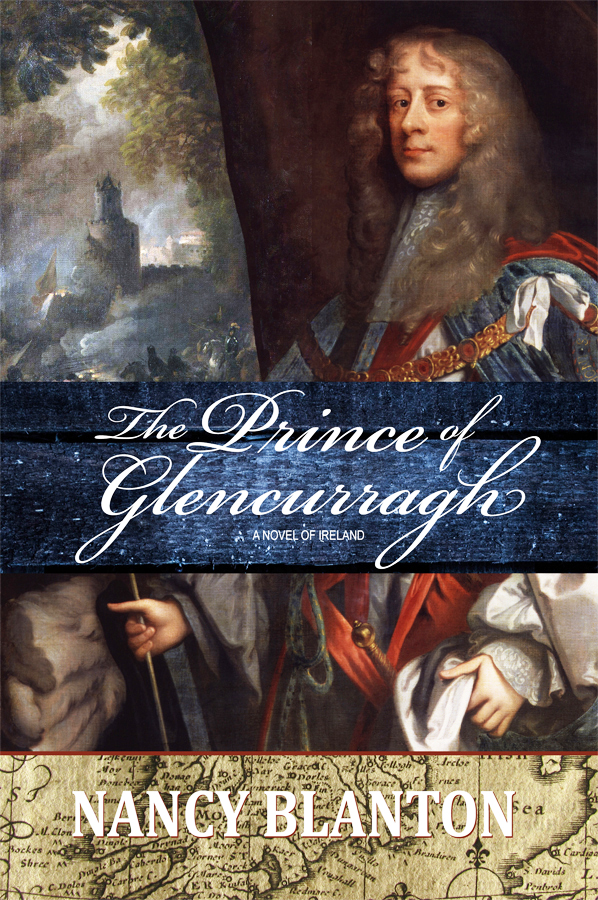 An heiress, a castle, a fortune: what could go wrong?
An heiress, a castle, a fortune: what could go wrong?
The Prince of Glencurragh is available in ebook, soft cover and hard cover from online booksellers.
https://books2read.com/u/4N1Rj6
http://www.amazon.com/Prince-Glencurragh-Novel-Ireland-ebook/dp/B01GQPYQDY/
The first time I visited Dublin Castle, I was just 14 years old. My family was a long way from our Florida home, and I was so consumed by the excitement of it all that now I hardly remember it. (I do remember my sister plopping me into a bathtub after I consumed way too much mead.)
 Now I wish I’d had a better head on me, for the castle will be the primary setting for my next book. Research already had begun last month when my sister unearthed this picture of me on the throne. Is it any wonder that I’m drawn to Irish history as much as I’m drawn to write?
Now I wish I’d had a better head on me, for the castle will be the primary setting for my next book. Research already had begun last month when my sister unearthed this picture of me on the throne. Is it any wonder that I’m drawn to Irish history as much as I’m drawn to write?
What tourists see today is not the Dublin Castle of my story, however. Founded by King John in 1204 for the defense of the city, the original castle had a circular tower and strong walls around a broad square that was filled with wooden structures for the business of castle daily life. But most of this was lost to fire in 1684.
The tower survived, and around it a new Georgian Palace was built to house government offices and activity, house the Lord Deputy, and host state dinners and other events.
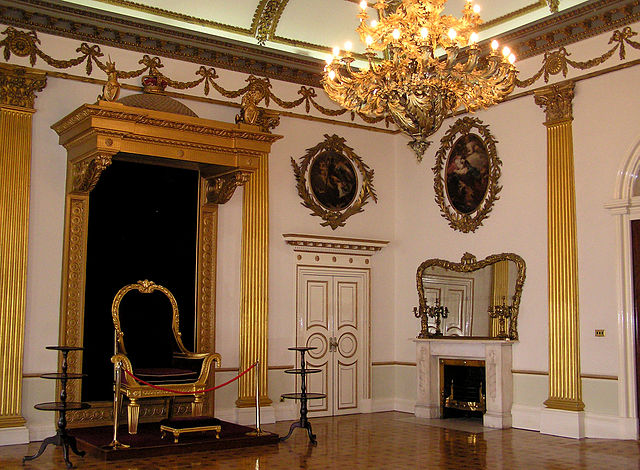
Today the castle is quite a sprawling complex that even offers a conference center. Visitors can tour historic State Apartments, including St. Patrick’s Hall, the throne room, dining room, bedrooms, and state corridor. They can also seem some remnants of Medieval life, and much more of modern life.
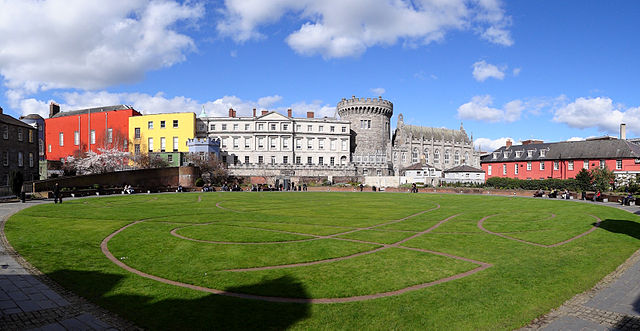
But I will be looking for the Castle of the 1630s and 40s, just prior to the Great Rebellion of 1641. The story I’m researching centers on the Lord Deputy of Ireland, Thomas Wentworth, the First Earl of Strafford. He was vice regent for King Charles I, and did much to fill the king’s treasury during his tenure in Ireland, but managed to enrich himself at the same time. He offended many a powerful earl in the process, and this ultimately led to his downfall and execution in 1641.
The resulting book will be a sequel to The Prince of Glencurragh, a novel published last month:
 As the son of a great Irish warrior, Faolán Burke should have inherited vast lands and a beautiful castle, Glencurragh. But tensions grow in 1634 Ireland, as English plantation systems consume traditional clan properties, Irish families are made homeless, and Irish sons are left penniless. Encountering the beautiful heiress Vivienne FitzGerald, Faolán believes together they can restore his stolen heritage and build a prosperous life. Because the Earl of Cork protects her, abduction seems to be his only option.
As the son of a great Irish warrior, Faolán Burke should have inherited vast lands and a beautiful castle, Glencurragh. But tensions grow in 1634 Ireland, as English plantation systems consume traditional clan properties, Irish families are made homeless, and Irish sons are left penniless. Encountering the beautiful heiress Vivienne FitzGerald, Faolán believes together they can restore his stolen heritage and build a prosperous life. Because the Earl of Cork protects her, abduction seems to be his only option.
But Vivienne has a mind of her own; the adventure that begins as a lark takes a dark turn, and plans go awry. Faolán finds himself in the crossfire between the four most powerful men in Ireland—the earls of Clanricarde, Cork, Ormonde, and the aggressive new Lord Deputy of Ireland—who use people like game pieces. With events spiraling beyond their control, what will become of Faolán, Vivienne, and the dream of Glencurragh?
Available in hard cover, soft cover and e-book.
Sign up for the Goodreads Giveaway now through Sept. 10. Or, purchase it today and embark on the adventure!
Sign up today on Goodreads and be eligible to win one of six free copies of The Prince of Glencurragh, my latest novel of 17th century Ireland. This book is a fast-paced adventure filled with action, romance, intrigue and terrible obstacles. Here's a piece from the hard cover book flap: Is it possible to reclaim a dream once it is lost to the mists of memory?
 Aengus O’Daly is what every good storyteller should be: observant, thoughtful, and inspired by love. He tells the story of his best friend Faolán Burke, both valiant and true, who tries to restore the world of his father’s dreams.
Aengus O’Daly is what every good storyteller should be: observant, thoughtful, and inspired by love. He tells the story of his best friend Faolán Burke, both valiant and true, who tries to restore the world of his father’s dreams.
Had he lived to build it, Sir William Burke’s Castle Glencurragh would have been a wonder to all who beheld it. But when he died, all that remained of the castle were a few scattered stones and the indelible image in the mind of his ten-year-old son.
But in 1634 as the boy comes of age, the real world is not the one Sir William knew. As the English plantation system spreads across the province of Munster, Irish families will lose their homes unless they accept the Protestant faith. Farms that have been in their families for centuries now are given to English soldiers as rewards for service.
Even the great stone castles, once both the bounty and protection of the strongest clans, now have fallen against the power of the siege and cannon. Aengus says, “The day of the castle already was gone, be we refused to know it.”
With his whole being, Faolán believes all can be made right again, with perseverance, his love by his side, and with the right and perfect plan.
The Prince of Glencurragh is set in 1634 prior to the great rebellion of 1641. It is a stand-alone prequel to my first novel, Sharavogue, which won first place for historical fiction in Florida’s Royal Palm Literary Awards. Both books are available on amazon.com and barnesandnoble.com. Visit my website for more info, at nancyblanton.com.
Rife with conflict, disaster, invention and sweeping change, there is not a century in history more fascinating and remarkable than the 17th. In the words of J.P. Sommerville, University of Wisconsin history professor, the 17th century is “probably the most important century in the making of the modern world. It was during the 1600s that Galileo and Newton founded modern science; that Descartes began modern philosophy; that Hugo Grotius initiated international law; and that Thomas Hobbes and John Locke started modern political theory.”
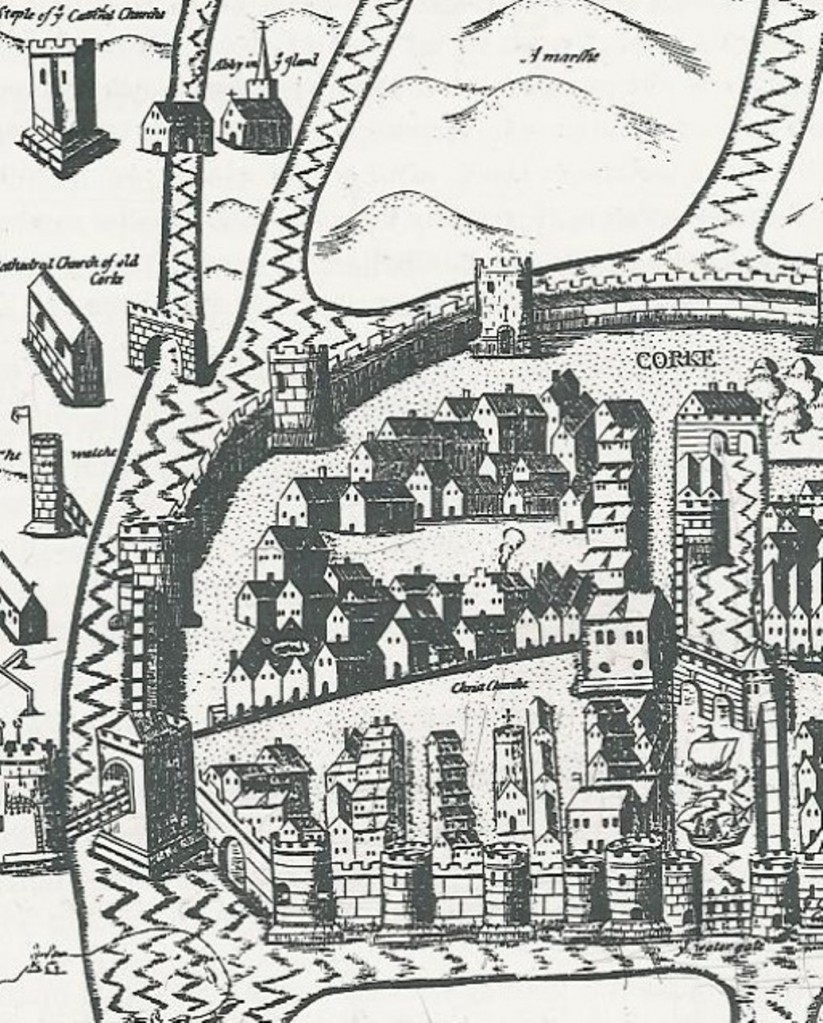
At the same time, the century produced an unprecedented synergy of disaster, as described by Robert Burton in 1638: “War, plagues, fires, inundations, thefts, murders, massacres, meteors, spectrums, prodigies, apparitions…and such like, which these tempestuous times affoord…” And all of that during the first few decades.
Some historians believe the changes and difficulties of this century resulted in part from a global climate change. The “Little Ice Age,” extending from the 16th to 19th centuries, delivered a particularly cold interval in the mid-17th century.
England in the 1630s recorded great floods, widespread harvest failure, intense cold winters, wet and cold springs, and drought in summer so excessive that “the land and trees are despoiled of their verdure, as if it were a most severe winter.” Such conditions would have been seen in Ireland as well.
These natural forces so affected human activity as to upset the existing social, economic and political equilibrium. People facing cold, famine, and grave uncertainty are likely to behave in more desperate manner.
Ireland in particular faced considerable unrest as the lands, traditional clans and centuries-old way of life were forever altered.
Life in Ireland
In 1603, Queen Elizabeth I died, leaving her throne and kingdom to James I. Her military forces in Ireland had delivered a crushing blow to end the Desmond rebellion in the southwest province of Munster.

The English saw Ireland as underutilized and ripe for exploitation. They sought to improve on Irish farming methods by settling their own more efficient farmers, and thereby increasing crown revenues.
The Earl of Desmond was among the Irish gentry who held castles, manor houses and vast tracts of land. They were mostly of Norman or Saxon roots, descending from distinguished families or clans who had obtained grants from Henry II in the 12th century. They resented the crown’s efforts to take control of their long-held dominions and displace their Irish tenants: typically subsistence farmers who paid rents either in food or in coin from the goods they sold. Often these tenants lived in one-room houses constructed of mud and grass, with no windows and a single door that served as both the entry and chimney.
Lord Deputy Arthur Grey seemed to defeat Queen Elizabeth’s purpose with his cruelty and scorched earth tactics. He left the province devastated, little more than a wasteland that would require years to recover, and was later removed from his position for excessive brutality—but, he had cleared the way once and for all for English settlement.
In a land already compromised by drought, the remaining Irish faced terrible famine, plague, disease, homelessness and oppression. Lands that had been owned and passed down through generations by traditional clans, especially Irish Catholic, were confiscated and granted to English military officers as reward for their service. Survival for the Irish was tenuous and choices were few. Some restoration took place in the coming years, but a fury simmered below the obedient surface.
In 1625, Charles I succeeded his father and extended his policies, filling his treasury through increased taxation and monopolies to his favorites, and expanding plantation in Ulster. When civil war erupted in England, Irish clans welcomed the distraction. They organized and rebelled again, retaking confiscated lands and ousting the English settlers, often violently.
When Parliament was victorious in the civil war, it took control of England and all of its business, and shocked the monarchies of the world by executing King Charles in 1649.
Parliamentary army leader Oliver Cromwell now turned his attention to Ireland, cutting an unrelenting swath of brutality, destruction and death across the island. Towns were leveled, people massacred, and terror wrought with full force. One estimate claims 618,000 Irish deaths from fighting or disease—an astounding 41 percent of the pre-war population.
Surviving Irish were relocated to rocky hills that served better for grazing sheep than growing crops. Some joined armies and fought in foreign wars; some became pirates. Some were sent to workhouses where they likely died; some escaped to colonies in America. Cromwell deported many to the West Indies where they perished from slave labor and tropical disease.
Irish Catholics were forced out of the Irish Parliament, while Catholic Mass and the Irish language were outlawed. Catholics were banned from holding office, Catholic clergy were expelled from the country, and Catholic landowners were stripped of their properties. An estimated one-third of the Irish-Catholic population was killed or deported.

On the heels of this work, Cromwell was elevated to “Lord Protector,” England’s uncrowned king, and he established his famed Commonwealth. Oppression of Ireland was severe and would be seen by historians as genocide. But by the time of Cromwell’s death in 1658, England had tired of his Puritan influences, and his son proved a weak successor. Charles II was brought back from his exile in France and monarchy was restored.
While somewhat kinder and more tolerant toward the Irish who had supported his return, including the Earl of Ormonde who had led the royalists in the Irish Confederacy, the plantation of Ireland continued. Known as the Merry Monarch, Charles II restored some of the gaiety that had been lost to England, and smoothed the way for new thought, invention and discovery in the latter part of the century as the Age of Enlightenment was dawning.
(Geoffrey Parker’s Global Crisis was a valuable source for this post)
 The Prince of Glencurragh is set in 1634 prior to the great rebellion of 1641. It is a stand-alone prequel to my first novel, Sharavogue, which won first place for historical fiction in Florida’s Royal Palm Literary Awards. Both books are available on amazon.com and barnesandnoble.com. Visit my website for more info, at nancyblanton.com.
The Prince of Glencurragh is set in 1634 prior to the great rebellion of 1641. It is a stand-alone prequel to my first novel, Sharavogue, which won first place for historical fiction in Florida’s Royal Palm Literary Awards. Both books are available on amazon.com and barnesandnoble.com. Visit my website for more info, at nancyblanton.com.
Today's post is reblogged from a guest post on Mary Anne Yarde's blog, "Myths, Legends, Books and Coffee Pots," (maryanneyarde.blogspot.com). In honor of the official publication of my new novel, The Prince of Glencurragh, this story is about one of my inspirations. While researching 17th century Ireland for my historical novel, The Prince of Glencurragh, I was stopped in my tracks by an arresting portrait of James Butler, the 12th Earl of Ormonde and the 1st Duke of Ormonde.
Ascending to earldom in 1634 at just 24 years of age, this earl became the Royalist leader of the Irish confederate forces in 1649, uniting the old English nobility, Catholics, and Irish rebel soldiers in a passionate stand against English dominance that was doomed to failure under the boot of Oliver Cromwell and his army.
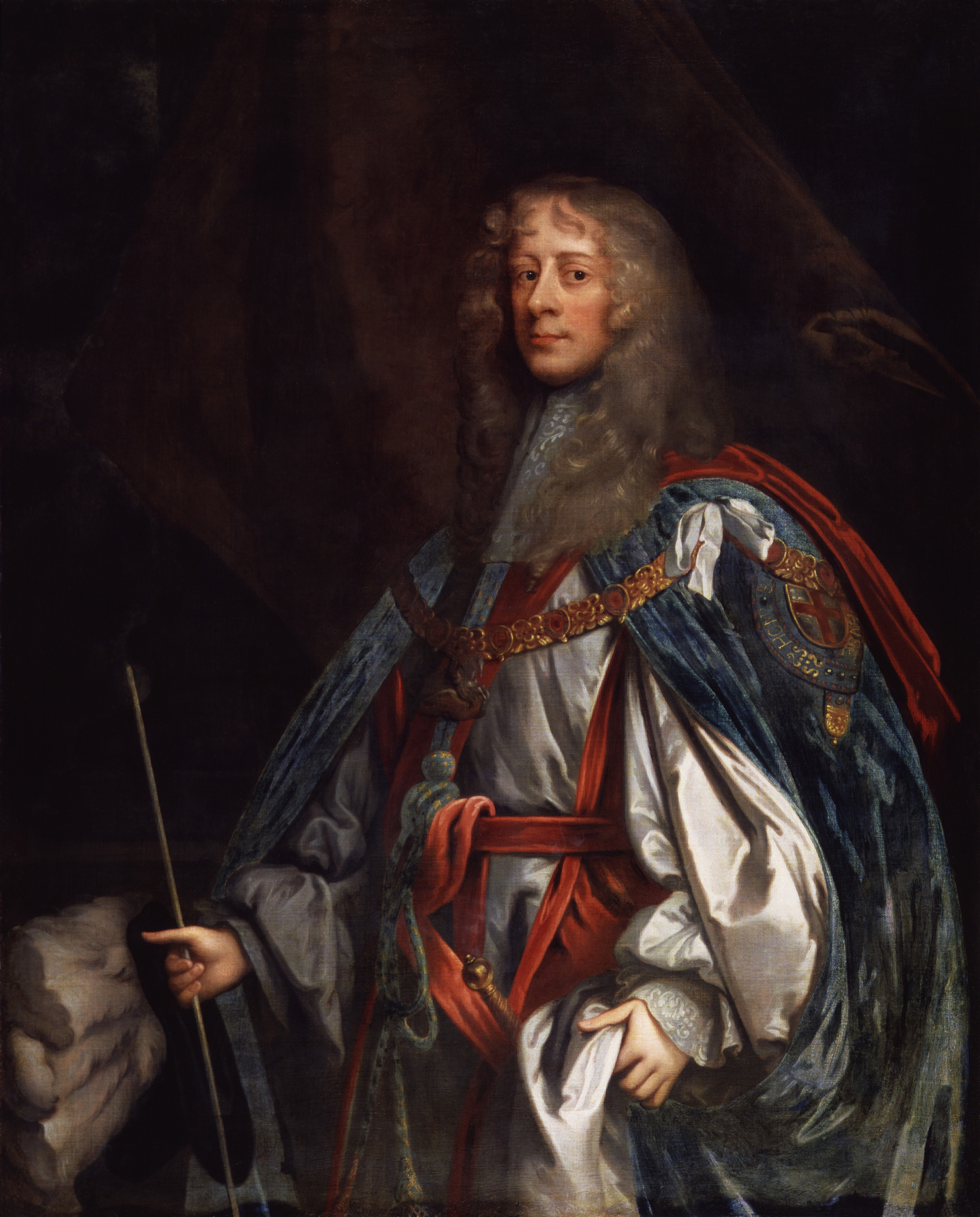
The portrait captures an older Ormonde, looking magnificent in ceremonial robes as he is created the first Duke of Ormonde. He wears white satin trimmed in red and blue. Delicate hands grasp lance and sword; his jaw is proud, his eyes soulful and knowing. The long golden locks affirm his noble stature and remind me of a young, proud-faced Roger Daltrey, out to change the world in his own particular way – perhaps with similar sexual energy but without Daltrey’s penchant for fisticuffs.
No less appealing would have been James’s enormous wealth and power. He was born into a family tracing back to the Norman Invasion in the 12th century. His ancestor, Theobold Walter, was named Chief Butler of Ireland, and thus the name stuck as a surname and reminder to everyone of the family’s prominence and favor under King Henry II. The family seat became the great Kilkenny Castle from which they controlled the vast kingdom of Ormonde (basically including counties Waterford, Tipperary and Limerick).
Ormonde landholdings in southwest Ireland were second only to the Desmond earldom by the 14th century. Rivalry and skirmishes between the two earldoms escalated into a private war in the 1560s, one that infuriated Queen Elizabeth I, and in part led to the first Desmond Rebellion in 1569.
When James’s father Thomas died in a shipwreck in 1619, James became the nine-year-old heir to his grandfather Walter Butler, the 11th Earl of Ormonde, and was given the courtesy title of Viscount Thurles. Walter was a devout Catholic, much to the dismay of King James I who schemed for Protestant control of Ormonde estates, imprisoned Walter for eight years, and sent James to be schooled as a Protestant by the Archbishop of Canterbury.
When the earl was released in 1625, most of his estates were restored to him. James went to live with him at his house in Drury Lane, London.
While in London, James learned the Irish language, which was to serve him well later in life; and also met his cousin Elizabeth Butler, daughter of Sir Richard Preston, Earl of Desmond. Their marriage in 1629 ended the long-standing feud between the two families.
When his grandfather died five years later, James became the earl. In 1642, he was named the Marquess of Ormonde; and, after living with the king in exile during the Commonwealth years, in 1661 Charles II created him the first Duke of Ormonde.
But wait, there is even more to Ormonde’s appeal. Most of my research has focused on James’s early life, and my favorite story thus far is about his first attendance of the Irish Parliament in 1635. The new Lord Deputy of Ireland, Thomas Wentworth, called the Parliament under King Charles I’s authorization, and was proud to have Ormonde on the roster.
In his biography of Wentworth, C.V. Wedgwood describes James Butler as a “high-hearted” nobleman: “Handsome, intelligent and valiant, he was also to the very core of his being a man of honor: loyal, chivalrous and just.”
And let’s not leave out dauntless (aka cheeky). When Wentworth ordered that the wearing of swords in Parliament would not be permitted, Ormonde told the official who tried to take his that the only way he’d get the sword was if it was “in his guts.” Wentworth summoned Ormonde before his council to answer for this behavior, and Ormonde arrived with his earl’s patent from the king. He threw it on the table. The king had made him earl, he said, and for anyone less than the king he would not ungird his sword.
“Wentworth [who was not yet an earl] conceded the force of the argument,” Wedgwood wrote.
Appealing as he was, Ormonde was not always everyone’s hero in life. As the Protestant in the family, he avoided the land confiscations that Catholic family members still suffered, and he was not above evicting Irish tenants if he believed he could earn higher rents from English ones. Still, when Ormonde died in 1688, he was lauded by poets of his time and was buried in Westminster Abbey.
In my novel, Ormonde is featured as a contemporary of the main characters who brings his significant power and influence, his chivalrous mindset, and his own agenda to the story, along with a fierce belief in fairness, justice, and love.
 The Prince of Glencurragh, published in July 2016, is the story of an Irish warrior who abducts a young heiress to help restore his stolen heritage and build the Castle Glencurragh. He is caught in the crossfire between the most powerful nobles in Ireland, each with his own agenda. It is the stand-alone prequel to my first historical novel, Sharavogue, which begins with the arrival of Cromwell in Ireland, and follows the protagonist to her indenture on an Irish sugar plantation on the island of Montserrat, West Indies.
The Prince of Glencurragh, published in July 2016, is the story of an Irish warrior who abducts a young heiress to help restore his stolen heritage and build the Castle Glencurragh. He is caught in the crossfire between the most powerful nobles in Ireland, each with his own agenda. It is the stand-alone prequel to my first historical novel, Sharavogue, which begins with the arrival of Cromwell in Ireland, and follows the protagonist to her indenture on an Irish sugar plantation on the island of Montserrat, West Indies.
My books are available on amazon.com and barnesandnoble.com. You can find more information and links on my website, nancyblanton.com
"Hot pants" were truly the hot fashion thing a few decades back, and as I recall they did not come in green. Unfortunately, we needed green ones for St. Patrick's Day. My sister and I were still in high school when my father launched his "Hibernian Social and Marching Club" in Jacksonville, Fla. Gayle and I were to carry a huge banner ahead of our grand master father who would hold his shillelagh high. We searched all over town but could not find green hotpants. The best alternative was to buy white ones and dye them. We had to pull out my other sister's big K-mart soup pot, the one we'd used to tie-dye all of our t-shirts, and start the process with those cakes of Rit green dye.
And what a soup it was, the darkest emerald green you could imagine, and I was excited about the color we'd wear. We'd followed all the directions, hadn't we? But when we were done with the rinsing, those hot pants were no greener than a stick of spearmint gum.
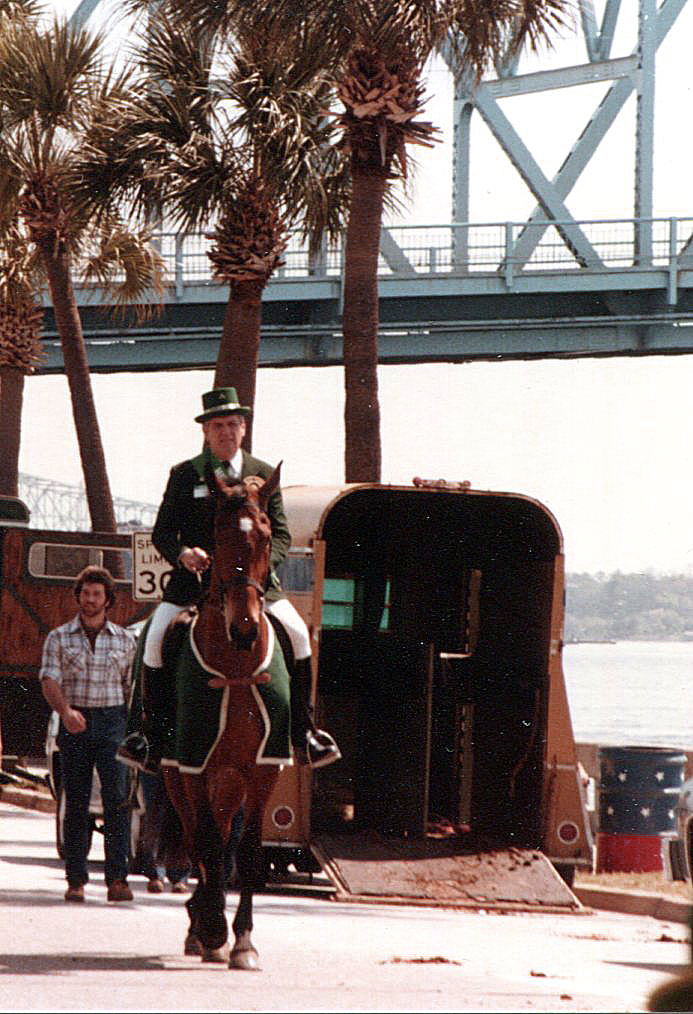
Oh well, green is green and we had no more time to make them darker. Somehow we have lost that precious photo of us carrying the banner and wearing our halter tops, hot pants and knee-high boots. But the memory remains clear.
My father and his cohorts began the day early with a few libations. Could have been Irish coffee, but I suspect it was shots of Irish whiskey. Tullamore Dew was one of his favorites.
Through my research, I've since learned the origins of this drink. Back in the 17th century the Irish called it "uisce beatha," pronounced “ish-ke-ba-ha,” which the English then wrote as "usquebagh." The word whisky (no e) was an anglicization of the pronunciation of uisce beatha which means "water of life" in English.
The parade involved Irish horses, Irish marching
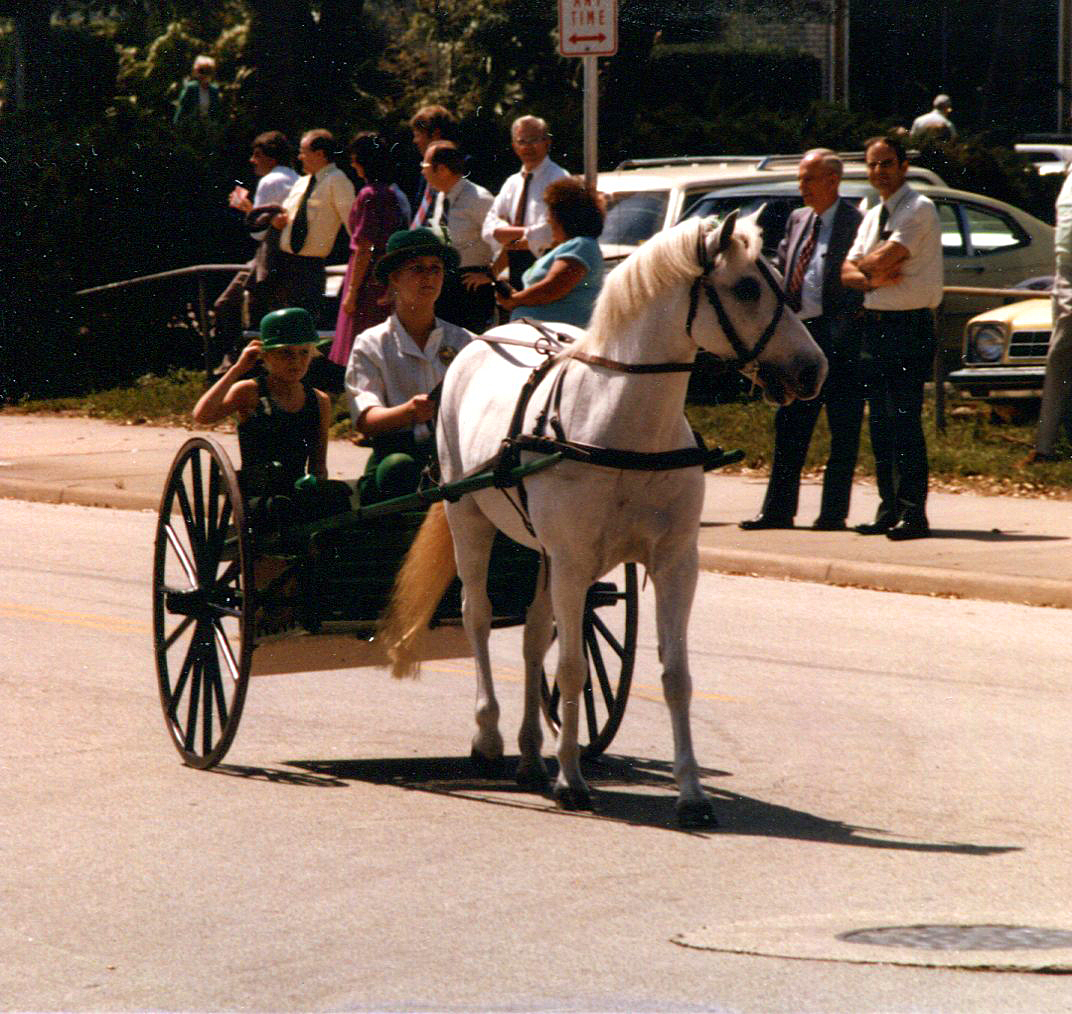
bands, my two nieces driving a buggy with a pony named January, and some strange fellow dressed in green who painted the a crazy, meandering green line all along the parade route.
To my knowledge, the Hibernian Social and Marching Club exists only in name today, but it was a proud day when it marched, wasn't it?
March 17th is truly a celebration of life. It is the official death date for St Patrick (AD 385 - 461). It became a Christian feast day in the early 17th century--yet another thing that started in that wildly important period.
Originally intended to celebrate the arrival of Christianity in Ireland, St. Patricks Day has happily evolved to celebrate the heritage and culture of all things Irish.
Sláinte mhaith! (“Slawn-cha wah,” an Irish toast to good health.)
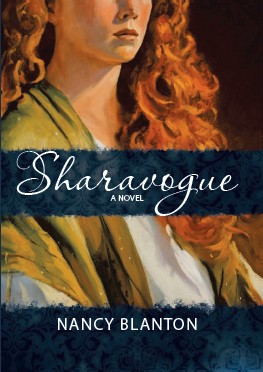 And for those who love Irish history as I do, you might enjoy Sharavogue, an award-winning novel of 17th century Ireland and the West Indies. Watch for the prequel coming out summer 2016!
And for those who love Irish history as I do, you might enjoy Sharavogue, an award-winning novel of 17th century Ireland and the West Indies. Watch for the prequel coming out summer 2016!
Makes a great St. Patrick's Day gift, too!
Having completed the manuscript for my second novel, The Prince of Glencurragh, which publishes this summer, I can take a break from my research reading to focus on the stack of historical novels that have been awaiting my attention for so long. I'm joining the Historical Novel Reading Challenge (a little late), and will be posting my reviews here over the next nine months. I invite you to take up the challenge as well, for historical novels are the best reading for those of us who like to learn while we're being entertained! Click the button below for more info on the challenge.
There are several reading levels from which to choose, and I am going with the Renaissance, 10 books, in that I'm starting late and also will begin research my next novel. Wish they had named a level after my favorite reading period, the Early Modern Age. (Yes, including the 17th century!)
I am right now reading M.L. Stedman's The Light Between the Oceans, and then will review Heyerwood, a novel by my new author friend Lauren Gilbert. Then comes The Miniaturist by Jessie Burton.
After that, I'll be working on my Goodreads Wish List. If you've read any of the books I'll be reviewing, I'd love to see your comments here.
Happy reading!
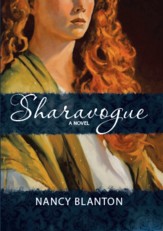 Sharavogue is the award-winning novel of 17th century Ireland and the West Indies, available now on amazon.com and barnesandnoble.com. The prequel, The Prince of Glencurragh, will be available in summer 2016.
Sharavogue is the award-winning novel of 17th century Ireland and the West Indies, available now on amazon.com and barnesandnoble.com. The prequel, The Prince of Glencurragh, will be available in summer 2016.
In reading last year's historical fiction reader survey by M.K. Tod, I was shocked to learn that the 17th century ranks 7th among time periods readers are most likely to choose. Shocked, I say! Because the 17th century is just so fascinating. In the words of J.P. Sommerville, University of Wisconsin history professor, the 17th century is "probably the most important century in the making of the modern world. It was during the 1600s that Galileo and Newton founded modern science; that Descartes began modern philosophy; that Hugo Grotius initiated international law; and that Thomas Hobbes and John Locke started modern political theory."
See what I mean? Just little things like these happened in the 17th century. But wait, there's more!
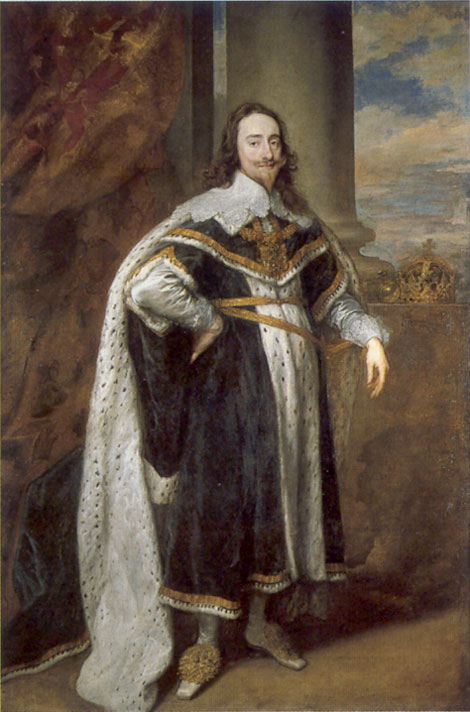
"The Dutch, French, Spanish, Portuguese, English, and others, all struggled to maintain and extend colonies and trading-posts in distant corners of the globe, with profound and permanent consequences for the whole world," Somerville wrote.
It was a time of tremendous turmoil and brilliant discovery:
And there were sweeping changes that affect our lives even today:
Architecture. Inigo Jones (the Banqueting Hall) and Christopher Wren (St Paul's Cathedral) introduced magnificent architectural designs in London and throughout England that remain beautiful and influential.
Banking. In England, instead of depositing gold in the king's mint for safety -- where he might confiscate it (as Charles I did in 1640) -- London merchants deposited money with goldsmiths who gave them receipts and promised to pay on demand.
Food. People started eating with forks for the first time. England discovered bananas, pineapples, chocolate, coffee and tea.
Furniture. Chests of drawers became common, and Grandfather clocks popular, followed by a new arrival: the bookcase.
Medicine. Doctors learned how blood circulates around the body, and how to treat malaria with bark from the cinchona tree.
And of course, there were the scandals:
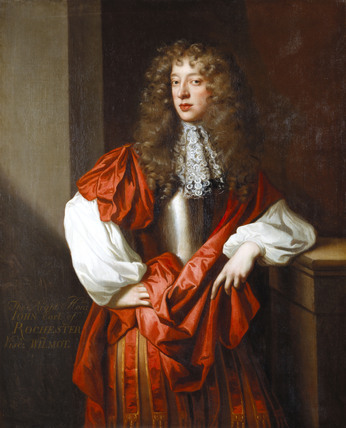
The murder of Buckingham
Personally, I am digging deeply, fascinated by the greed, intrigue, rebellion, atrocities and resilience that took place in Ireland. Fascinating stories abound.
Yes, I am shocked that anyone might find another century more alluring. Not me.
 Embark on an adventure in Irish history -- 17th century, that is, with Sharavogue, and my upcoming novel, The Prince of Glencurragh. Available on amazon.com, barnesandnoble.com, and iBooks. Find out more at nancyblanton.com
Embark on an adventure in Irish history -- 17th century, that is, with Sharavogue, and my upcoming novel, The Prince of Glencurragh. Available on amazon.com, barnesandnoble.com, and iBooks. Find out more at nancyblanton.com
My dear friend in southwest Ireland, Eddie MacEoin, sent me a picture of the town in Tipperary, Ireland that has the same name as my first novel: Sharavogue. I had hoped to visit there last summer but ran out of time. In Ireland there is never enough time.
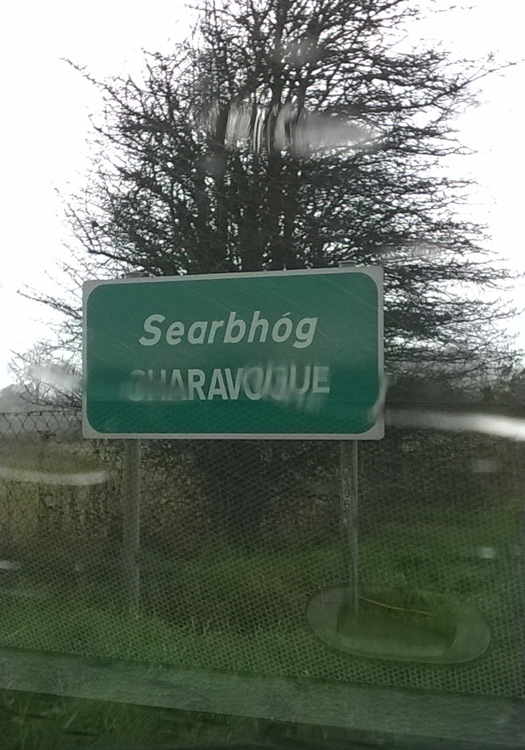
I didn't name the book after the town, but had stumbled across the name during my research. Its meaning--bitter place or bitter land--captured my imagination, because my book features an Irish girl indentured on a sugar plantation on the island of Montserrat. What a sweet bit of irony to name the plantation Sharavogue?
Well, writers are often the recipients of stinging reviews, whether warranted or not, and one of my reviewers took me to task claiming I had that meaning wrong. One of us is definitely wrong, but I have two good sources that agree, so, I'm just saying (snark...), and I find it a beautiful and mysterious-sounding name reminiscent of Scheherazade.
The quote below is from a biography, The Red Earl, the Extraordinary Life of the Earl of Huntingdon, by Selina Hastings.
"Sharavogue--the name means 'bitter land'--is situated halfway along the road between Roscrea and Parsonstown (now Birr)...The tiny hamlet of Sharavogue lies on the edge of the Bog of Allen, surrounded by pleasant, well-farmed country, gently undulating and characterised by meadows and small copses, by bushy hedgerows and fast-running streams."
After such a description, I looked for something following to explain why the town was so named, but there was no answer. Maybe, as Eddie's picture suggests, it becomes a rather wet and dismal place in fall and winter.
The Sharavogue in my story depicts a time in history when the Irish were even more popular as slave labor than the Africans. As reported by IrishCentral recently, from a blog in Scientific American, the Irish clan system was largely abolished after the Battle of Kinsale at the end of Queen Elizabeth's reign. The English seized Ulster and sent some 30,000 prisoners of war to be sold as slaves in the colonies of America and the West Indies.
"In 1629 a large group of Irish men and women were sent to Guiana, and by 1632, Irish were the main slaves sold to Antigua and Montserrat in the West Indies. By 1637 a census showed that 69% of the total population of Montserrat were Irish slaves, which records show was a cause of concern to the English planters."
The Irish slaves were actually cheaper and often received harsher punishments at the hands of planters, according to the article.
The 17th century is rich with stories that had profound effects on the course of history, and yet is is overlooked by many readers and writers. Watch for my new blog series on the 17th century, coming soon!
 Why not embark on an adventure in Irish history? Sharavogue makes an excellent gift for yourself or someone you know who loves historical ficion. Find it at amazon.com, barnesandnoble.com, iBooks and other independent booksellers.
Why not embark on an adventure in Irish history? Sharavogue makes an excellent gift for yourself or someone you know who loves historical ficion. Find it at amazon.com, barnesandnoble.com, iBooks and other independent booksellers.
And for any author, artist, consultant or business person looking to stand out among potential customers, consider my latest, Brand Yourself Royally in 8 Simple Steps: Harness the Secrets of Kings and Queens for a Personal Brand that Rules. This is a handbook for personal branding that combines my experience in corporate communications and historical fiction, and will help you define yourself effectively in a competitive market. Available on amazon.com, barnesandnoble, iBooks, Scribd, and Kobo. Visit my website at nancyblanton.com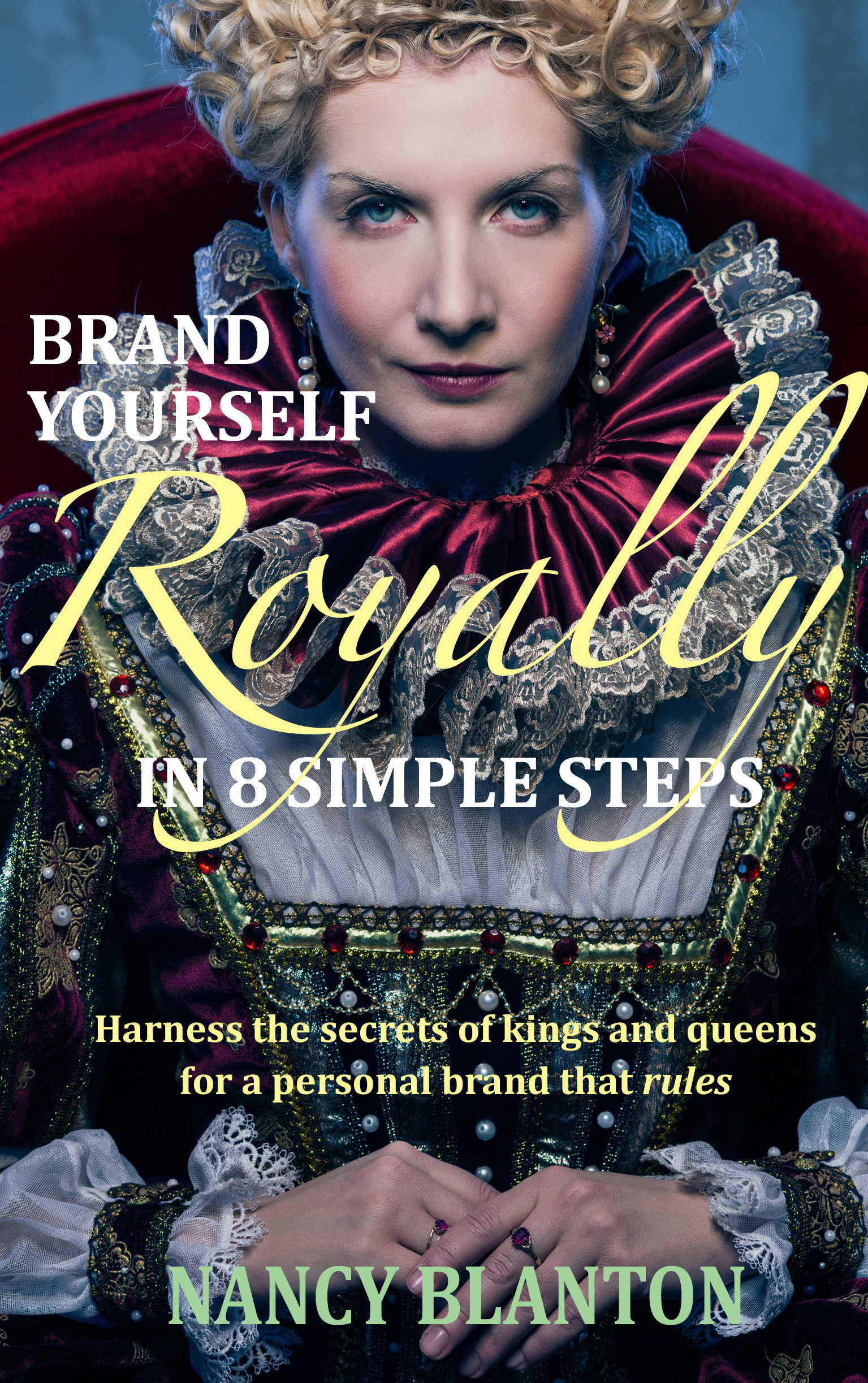
One of the characters in the novel I'm writing now will sicken and die within a year. It's sad, I know, but life expectancy in the 17th century averaged at around 35 years, so death tends to play a big role in stories from that time.

I had planned for this character to die from tuberculosis or "consumption" as they called it, which was the number-one killer at the time. This research in itself was fascinating, because there exists a list of death causes from the time including the "King's Evil," "plague in the guts," and "teeth and worms."
But I soon learned that people with untreated TB can suffer for five to 10 years before they succumb. That would not work for this character. Then I stumbled upon an unexpected 17th century disease, anorexia.
Like many people, I had thought anorexia a fairly modern disease that was all about body image. I was wrong on both counts. Physicians were recording anorexic symptoms in the 17th century. And, it is not really about body image, it's about control:
To understand anorexia you need to remove the misconception and preconception that this mental disorder is entirely about the need to be thin. The following are a few of the other factors that contribute to eating disorders:
(
http://www.gethelpforeatingdisorders.com/the-mindset-behind-anorexia)In the 17th century, physicians called the symptoms they were seeing "nervous atrophy" or "consumption." A post by Julie O'Toole covers the documentation in a clinic blog post. In 1689, a doctor describes working with both female and male patients with similar symptoms. He calls it a "distemper" of the nervous system which destroys the nerves and causes a "wasting of the body."
His female patient, who was having "fainting fits," tried all of his remedies, including aromatic bags and plasters applied to the stomach, to no avail. She eventually tired of his treatments and begged to let nature take its course.
She died three months later.
The male, son of a clergyman, "fell gradually into a total want of appetite, occasioned by his studying too hard and the passions of his mind." He advised the patient to abandon his studies, take the country air, and go on a milk diet. The patient regained his health at least temporarily, but was not cured of the disease.
I am fascinated by this case study, and it opens up new thinking for me. The character in my story is likely to suffer similarly to the female patient, but I now have a better way of describing the mindset of this disease, to present it more accurately to readers. It also adds an interesting layer of complexity to the story that I had not realized before, and I can't wait to unravel it.
I also have two dear friends whose daughters nearly lost their lives to this terrible disease. Fortunately, those girls were able to overcome it. The fear and pain the families suffered was unimaginable. Through story, readers can gain a better understanding of the impacts of this disease.
The book underway has the working title of Glencurragh, and is slated for publication in 2016.
 In the meantime, read Sharavogue, a novel of 17th century Ireland and the West Indies, available on amazon.com, barnesandnoble.com, indiebound.com, and also on iTunes for iBooks.
In the meantime, read Sharavogue, a novel of 17th century Ireland and the West Indies, available on amazon.com, barnesandnoble.com, indiebound.com, and also on iTunes for iBooks.
It's a fast-paced historical adventure with a strong female lead. Happy reading!
Bestselling author James Patterson says, with the vast availability of content on the Internet today there are "no excuses" for not doing research when writing a novel. And I say, why would you bother writing without it? I cannot see the thrill of writing pure fantasy that comes only from my own head, without any anchor or reference to real life. For me, writing is a learning experience, and the thrill of finding something through research also is my inspiration. In historical fiction it is critical, and is the best part of the writing process. I become a detective in finding minute bits of information hardly anyone cares about, and then a weaver, binding it into the story to create a rich fabric. The process is nothing less than magical, and the bonus is that the reader also learns something new but hardly even notices it.
 Doing the research and then sharing it also can (and should) be a spiritual experience.
Doing the research and then sharing it also can (and should) be a spiritual experience.
Years ago I had the honor to hear Father Noel Burtenshaw speak on spirituality at an event on St. Simons Island, Georgia. He'd been fascinated by seeing the redwing blackbirds in the marsh grass on his way across the bridge, this little black bird with a beautiful bit of red on its wings. Being a man of religion, he immediately thanked God for the wonder of such a creature. Then he turned to his wife.
"Did you see the redwing blackbird?" he said, thereby sharing the experience with her.
And then for the audience, he made the sign of the cross by lifting his hand to the sky (thanking God) and then extending it to his side (sharing with his wife in the car beside him).
Discovering something new, appreciating things in the world, and then sharing them with others is a spiritual act.
This week I was thrilled to stumble across something new in my research. It was the "1641 Depositions" from Trinity College Library in Dublin. I was so excited! There are 8,000 depositions from landowners and rebels all over Ireland giving testimony about the causes and events starting the Irish rebellion against Protestant English in the year 1641. I was grateful for it, because it informs my work in new ways. Immediately I shared this with my husband. He returned a blank look, and somewhat sad eyes, as if to say, "you poor crazy person."
But I know the spiritual joy I will feel as writer, weaving these tidbits into my prose, adding authenticity to my story, and then sharing them by slipping them stealthily into sentences for the readers. It is fun to be both spiritual and sneaky.
Heh heh heh.
 Embark on your own sneaky Irish adventure by reading Sharavogue, winner of the Royal Palm Literary Award for historical fiction. Available from online booksellers:
Embark on your own sneaky Irish adventure by reading Sharavogue, winner of the Royal Palm Literary Award for historical fiction. Available from online booksellers:
Last night my sister Daphne and I watched the movie, A Little Chaos, with Kate Winslet as Sabine, a 17th century landscape architect, and Alan Rickman as King Louis XIV. It was rather a lovely fiction about a the building of an outdoor ballroom at Versailles Palace (apparently the ballroom was real, but the screenplay was TMU: totally made up.) In addition to enjoying just about anything set in the 17th century, we were thrilled to see familiar floors, archways, hallways and yes, the magnificent stairway we had seen when we visited Ham House last fall. This house and garden are part of the National Trust located just about 10 miles from London at Richmond-upon-Thames, Surrey.
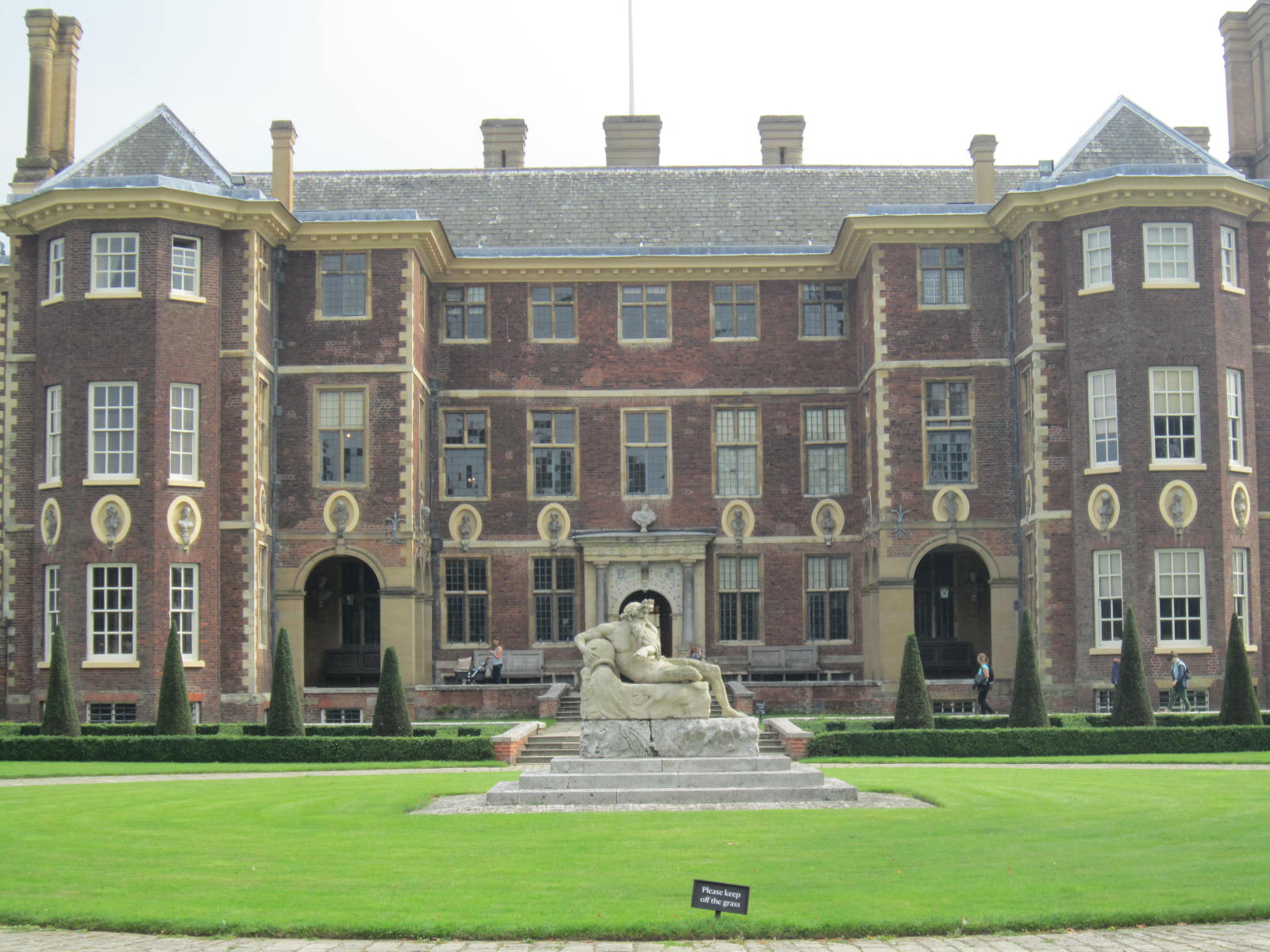 Ham House is a beautiful place, and I could not get enough of it, literally. Before visiting London I had corresponded with Lucy Worsley, a brilliant person who had recommended Ham as an excellent experience of a 17th century manor house. I had looked it up and thought I had all the details right, my two sisters and I took the train, but when we arrived at Richmond we got caught in a rain shower and ducked into a pub for a while. I thought we still had plenty of time because the place wouldn't close until 5 pm, and we arrived before 3.
Ham House is a beautiful place, and I could not get enough of it, literally. Before visiting London I had corresponded with Lucy Worsley, a brilliant person who had recommended Ham as an excellent experience of a 17th century manor house. I had looked it up and thought I had all the details right, my two sisters and I took the train, but when we arrived at Richmond we got caught in a rain shower and ducked into a pub for a while. I thought we still had plenty of time because the place wouldn't close until 5 pm, and we arrived before 3.
And our arrival was heroic, because my sister Gayle had worn her high-heeled boots that day. She swore they were comfortable to walk in, but we had about 1.5 miles to walk from Richmond, on a dirt path. It was a gorgeous day along the river, but poor Gayle could hardly enjoy it. And when we arrived for our tickets, the agent told us in fact we were late, because the shop would be open until 5 pm, but sorry, the house was closing at 3 pm.
She took pity on us (must have seen three very distressed faces) and said we could just take a quick run through if we would hurry. We did! The floors, the walls, the green closet, the fabulous library, the 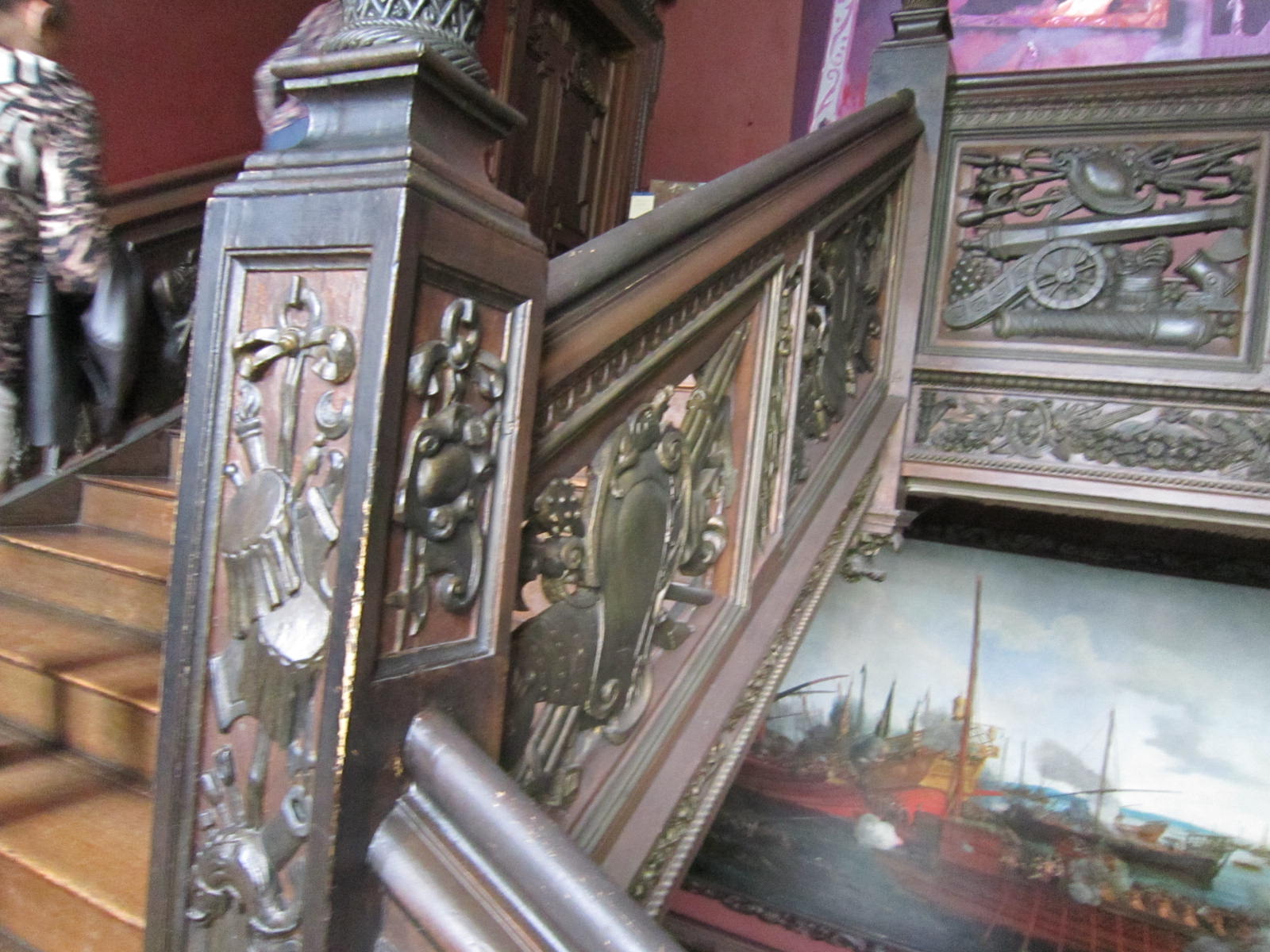 gallery, the kitchen and so on. And then the chapel. And the magnificent carved staircase.
gallery, the kitchen and so on. And then the chapel. And the magnificent carved staircase.
Thank goodness when they escorted us from the house I bought the books from their store, because when I saw certain scenes in the movie, particularly the house where landscaper Monsieur André Le Nôtre lived with his very naughty wife, I knew we had been there. The same floors, the same corridors, the arches, the front entry and gate. And the unmistakable balustrade carved with trophies of arms, with carved baskets of flowers on the newels.
Why did they use a house outside of London when the movie is set outside of Paris? My guess is because it was probably less expensive, and also because the Duke and Duchess of Lauderdale lavishly decorated the house to show their high position in rich 17th century society.
 I may be whining a bit here, as I wished to linger a while in the halls at Ham House, and absorb the feel of it, maybe see if a ghost or two might tap me on the shoulder. But alas, we had to leave. My poor sister could barely walk back to Richmond, but the Clark's Shoe Store did benefit because she could not go another step in those boots and bought a lovely pair of patent leather flats. I wonder, if we had been shopping the in the 17th century, would they have been satin slippers instead?
I may be whining a bit here, as I wished to linger a while in the halls at Ham House, and absorb the feel of it, maybe see if a ghost or two might tap me on the shoulder. But alas, we had to leave. My poor sister could barely walk back to Richmond, but the Clark's Shoe Store did benefit because she could not go another step in those boots and bought a lovely pair of patent leather flats. I wonder, if we had been shopping the in the 17th century, would they have been satin slippers instead?
The movie was interesting, mildly entertaining, but lovely for the cast (who does not love Alan Rickman?), the costumes and, of course, the wonderful settings. My only criticism would be that poor Kate's wardrobe was drab by Louis XIV standards, and her hair was just as messy when she was going to court as when she was working in the garden. Disappointing. But it was truly a thrill to see on the screen the wonderful place we visited, and remember setting foot on those stairs.
 Ham House also serves as the model for a location in my upcoming prequel to Sharavogue, working title Glencurragh. Read Sharavogue and follow this blog for information on new books coming soon. Sharavogue is available on amazon.com, barnes&noble, iTunes for iPad, or Google books.
Ham House also serves as the model for a location in my upcoming prequel to Sharavogue, working title Glencurragh. Read Sharavogue and follow this blog for information on new books coming soon. Sharavogue is available on amazon.com, barnes&noble, iTunes for iPad, or Google books.
Have you ever heard a story of construction workers who died on the job being buried as part of the structure they were building? One of the first stories I heard was of men entombed within the Brooklyn Bridge. Apparently this is a myth, because a decaying body embedded in a concrete structure would then make that structure unstable. However, author David McCullough estimates 27 people were killed in various accidents or safety issues during the bridge construction.

I became curious about these myths after I happened across one story recently while researching the upcoming prequel to my historical novel Sharavogue. Call it serendipity, it was one of those magical, unexpected discoveries that make researching history fun, while providing genuine detail to spice up a novel. Centuries ago during construction of the enclosing walls for the town of Bandon, County Cork, Ireland, a young man was killed when a fellow mason working on a scaffold above him accidentally dropped his pickaxe. In the 1800s, the site was being excavated to build a summerhouse. When the workers found a large flagstone that gave a hollow sound when struck, they thought (hoped) they might have discovered an ancient stash of gold coins. Instead they found the skeleton of the poor mason, the pickaxe still under his skull, and his hammer and trowel by his side. In his pocket was a silver coin from the reign of Edward VI.
Little remains of this wall today, but stories live on, right?
Such as the Hoover Dam, where somewhere between 96 and 112 workers were killed between 1931-36. The myth has it that it was too costly to halt construction when a man was killed and so the concrete pour continued. But if this was true, the structure would not have been able to withstand the pressure of all that water over the years.
With the body of water that would become Lake Mead already beginning to swell behind the dam, the final block of concrete was poured and topped off at 726 feet above the canyon floor in 1935. On September 30, a crowd of 20,000 people watched President Franklin Roosevelt commemorate the magnificent structure’s completion. Approximately 5 million barrels of cement and 45 million pounds of reinforcement steel had gone into what was then the tallest dam in the world, its 6.6 million tons of concrete enough to pave a road from San Francisco to New York City. Altogether, some 21,000 workers contributed to its construction.
One story where site burials are not a myth is that of the Fort Peck dam site in Montana. Eight workers were caught in a slide there in 1938, but only two bodies were recovered.
My curiosity produced many stories of human sacrifice during constructions projects, as well as immurement. One from Germany concerned a mother who sold her son to be interred in the foundations of a castle, and then--feeling rather guilty--she threw herself off a cliff.
And a fascinating yet horrifying story is that of the Mole in Algiers, a massive breakwater started in the 16th century by the pirate-king Barbarossa. This structure was intended to provide defense against the Spanish, but the work was constant and relentless, requiring more than 30,000 Christian slaves for labor, and costing the lives of 4,000 slaves, or about five lives per foot of structure.
These days, thanks to safety requirements, construction deaths are fewer, workers are paid, and as far as I know are well cared for in case of accidents or deaths. In the US, private industry construction deaths per year are in the hundreds, not thousands. The leading causes of construction deaths are falls, being struck by an object, electrocution, or being caught between things.
I'll be visiting Bandon later this year for a little on-the-ground research, and will say a prayer for that poor mason who died there. Until then, keep it safe out there, and follow this blog for stories about my travels in Ireland starting in June, and for notices of when the new book will be out.
 And in the meantime, embark on an adventure in Irish history! Sharavogue is the award-winning story of a peasant girl who vows to destroy Oliver Cromwell during his march of destruction across Ireland in the 17th century, and her struggle for survival on a West Indies sugar plantation.
And in the meantime, embark on an adventure in Irish history! Sharavogue is the award-winning story of a peasant girl who vows to destroy Oliver Cromwell during his march of destruction across Ireland in the 17th century, and her struggle for survival on a West Indies sugar plantation.
 If you are looking for a unique way to celebrate the Irish on St. Patrick’s Day this year, consider getting a new haircut. In this woodcut by Albrecht Druer from 1521, you can see the glib or “glybbe” haircut that was once popular with runners and kerns (Gaelic soldiers during the middle ages).
If you are looking for a unique way to celebrate the Irish on St. Patrick’s Day this year, consider getting a new haircut. In this woodcut by Albrecht Druer from 1521, you can see the glib or “glybbe” haircut that was once popular with runners and kerns (Gaelic soldiers during the middle ages).
For the ancient Irish runners this cut was a badge of honor, and also a thorn in the side of the English who hated it and wanted to have it outlawed.
To achieve this look, the hair at the back and side of the head is trimmed very short, while the front and top are kept long, giving you a large fringe to fall down over your face much like the forelock of a horse.
It might have looked a little like this image at left or, depending on the skill of your stylist, the image at right.
Whatever their hairstyle, fast and long-distance runners have long been appreciated by the Irish. According to Patrick Weston Joyce’s “A Social History of Ancient Ireland," Irish kings always kept runners in their employment as messengers or couriers, and sometimes they were women: “Finn Mac Dumail had a female runner who figures in the story of Dermot and Grania.”
In the time of Henry VIII, Pope Paul III had a number of “Rome-runners” (as opposed to "rum runners") or messengers who traveled back and forth between Ireland and Rome to keep the Pope informed about Reformation activity.
For the Irish Citizen’s Army founded in 1913 by James Connolly, the "Fianna Boys" were trained to act as messengers and runners during the actual uprising.
And, keeping the tradition going in 1984, John Treacy of Ireland, a graduate of Providence College in Rhode Island, won the Marathon Silver Medal in the 1984 Olympic Games in Los Angeles.
To read more about this, please visit the Irish Archaeology blog post, “16th Century Irish Hipsters.”
And have a delightful St. Patrick's Day!
Part 5 in series on personal branding
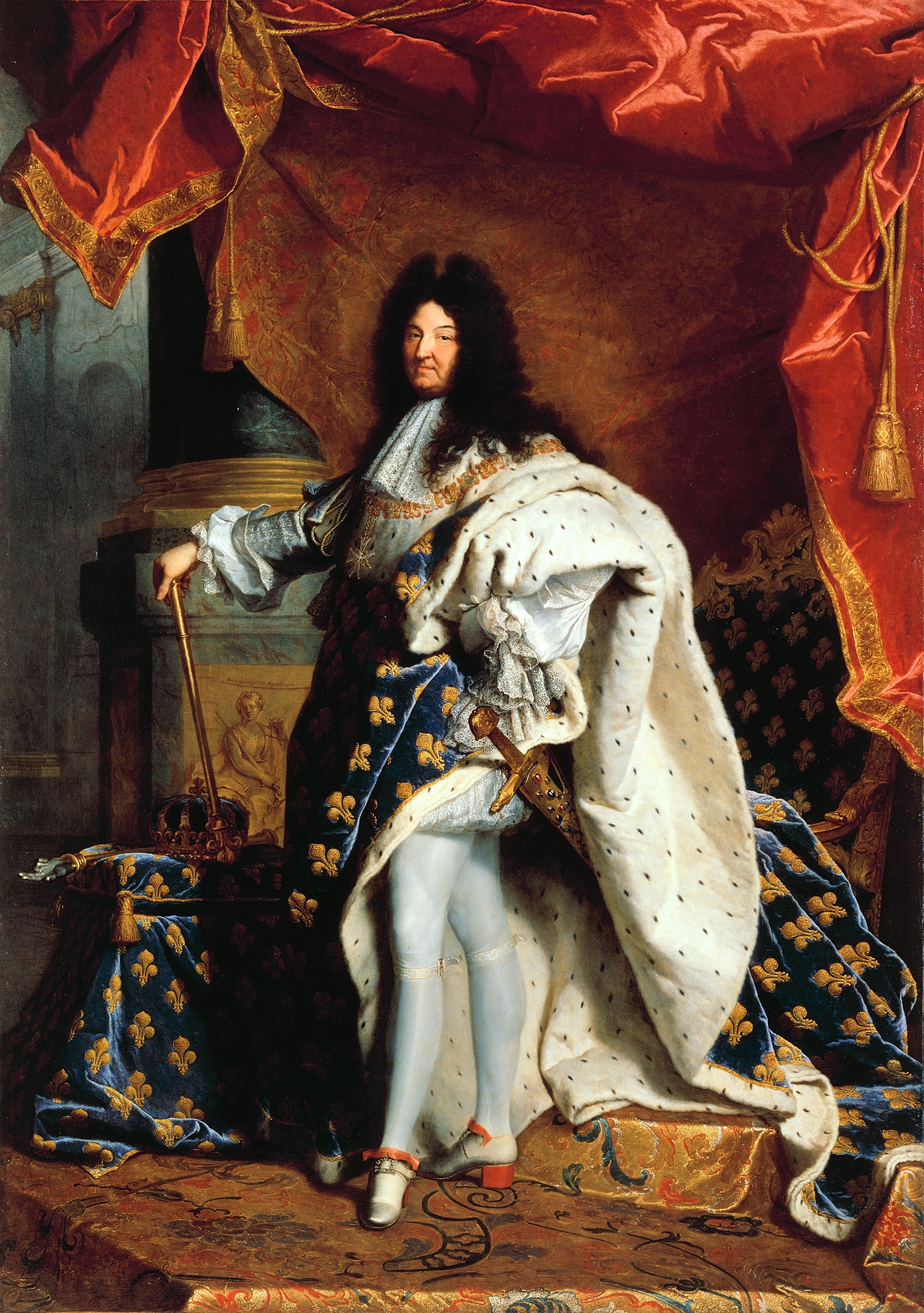
It should come as no surprise that when it comes to personal branding, the French take it to a higher level. The Sun King, Louis XIV, is the most outstanding in a long line of Louis who had impressive nicknames: Louis the Young, Louis the Lion, Louis the Saint. These guys had the right idea of personal brand. And then, there were a few who kind of botched it: Louis the Quarreler, and Louis the Prudent, the Cunning, the Universal Spider (this one deserves further exploration in another post!).
But The Sun King has transcended the centuries, reigning longer than any other monarch of a major European country (more than 72 years, 1643-1715). He is memorable for centralizing government, for his lavish Palace of Versailles, for his his grand poses (and shapely legs), and of course for his fashion sense.
Taking back control of his country from the Catholic cardinals, Louis XIV believed in rule by divine right. He valued fiscal and military reform, law and order, the arts, and thriving French industries that could be effectively taxed. To move forward with his goals, he had to start by eliminating the mammoth corruption and embezzlement by some of his advisors.
He gained the respect of the populace by focusing first on law an order, and relied on his new government ministers reporting directly to him to help establish and maintain his public image. King Louis understood that the display of magnificence and splendor created part of a king's power. He also knew the value of repetition. His portraits were numerous, and his images were distributed far and wide to reach as many of his subjects as possible.
According to Peter Burke, author of The Fabrication of Louis XIV, "Louis saw himself everywhere, even on the ceiling."
His personal symbol, or logo, was the sun, and anything that bore his standard -- his bed and his dinner table even if he was not present -- was to be respected as if he himself were there.
Brand guidelines
To maintain a consistency of image and message in all of this repetition, there had to be rules, and Louis understood this as well. In all its forms, his public representation had to convince the audience of his greatness. Louis identified with admired historical figures such as Clovis, the first Christian king of France, and Charlemagne. So, the artists, musicians and writers drew from such powerful images as a Roman triumph, an equestrian statue with the horse stomping some evil. In state portraits he was:
"As for the expression on the royal visage, it tends to vary between ardent courage and dignified affability. A smile is apparently considered inappropriate for the King of France," Burke wrote.
In addition to portraits, sermons, sonnets, poems, literature, plays, coins and tapestries all had to present the king in this idealized light.
Brand strategy
To help implement his brand, King Louis had Jean-Baptiste Colbert who devised and documented a strategy whereby the king would be glorified as a patron of the arts. This "communications plan" included a list of all the various media where the king could not only invest but be depicted, as well as a list of individuals, their strengths and weaknesses, who could be called upon for the work.
"The plan was put into place in the next decade," wrote Burke, "when we can observe the 'organisation of culture' in the sense of the construction of a system of official organizations which mobilized artists, writers and scholars in the service of the king."
Like the sun, King Louis rose with the work of his reign and the help of his brand advisors, but in later years experienced a "royal sunset" when expensive wars, fragmented politics and a shortage of talent contributed to the decline of his popularity. There would be two more Louis to rule France before the French Revolution of 1789, but none to reach so high a zenith.
The takeaways
What can we learn from the personal brand of the Sun King?
Next week, part 6 of the series will focus on Napoleon.
 Sharavogue recently won first place for historical fiction in the Florida Writers Association Royal Palm Literary Awards! You can purchase a copy from online booksellers and at the Book Loft on Amelia Island, FL. I will be presenting at the Amelia Island Book Festival Feb. 20-21.
Sharavogue recently won first place for historical fiction in the Florida Writers Association Royal Palm Literary Awards! You can purchase a copy from online booksellers and at the Book Loft on Amelia Island, FL. I will be presenting at the Amelia Island Book Festival Feb. 20-21.
Part 3 in series on personal branding If England's King Henry VIII had been an author, who might he have been? Authors, like royalty, can project certain images to create a persona in the minds of their audiences and the general public, to thereby be remembered and gain policy support, or book sales as the case may be.
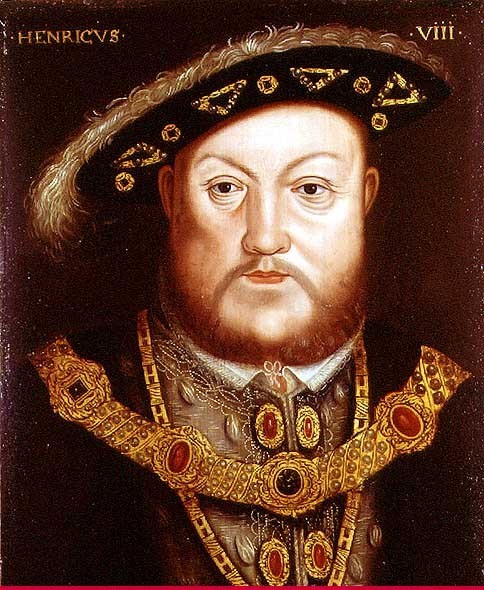 As noted in Part 1 of this series, the proliferation of social media apps today make it nearly impossible to project an inauthentic persona. The moment you thought you had created a good one, someone would post an instagram of you carrying out the garbage in your underwear. But King Henry was able to create and project a persona that met his needs, and the
As noted in Part 1 of this series, the proliferation of social media apps today make it nearly impossible to project an inauthentic persona. The moment you thought you had created a good one, someone would post an instagram of you carrying out the garbage in your underwear. But King Henry was able to create and project a persona that met his needs, and the  corresponding author that comes to mind for me is Ernest Hemingway.
corresponding author that comes to mind for me is Ernest Hemingway.
As young men, both Henry and Ernest were good looking with athletic physiques. Henry was known for having "an extremely fine calf to his leg," for example. Both played hard at sports, be it jousting or hunting, and both saw themselves as warriors. Both were interested in education and literature. Both married a few times. Both drank to excess. Both attained a "larger than life" persona that continued long after the men themselves had faltered due to illness and, well, bad behavior.
King Henry's Brand Persona
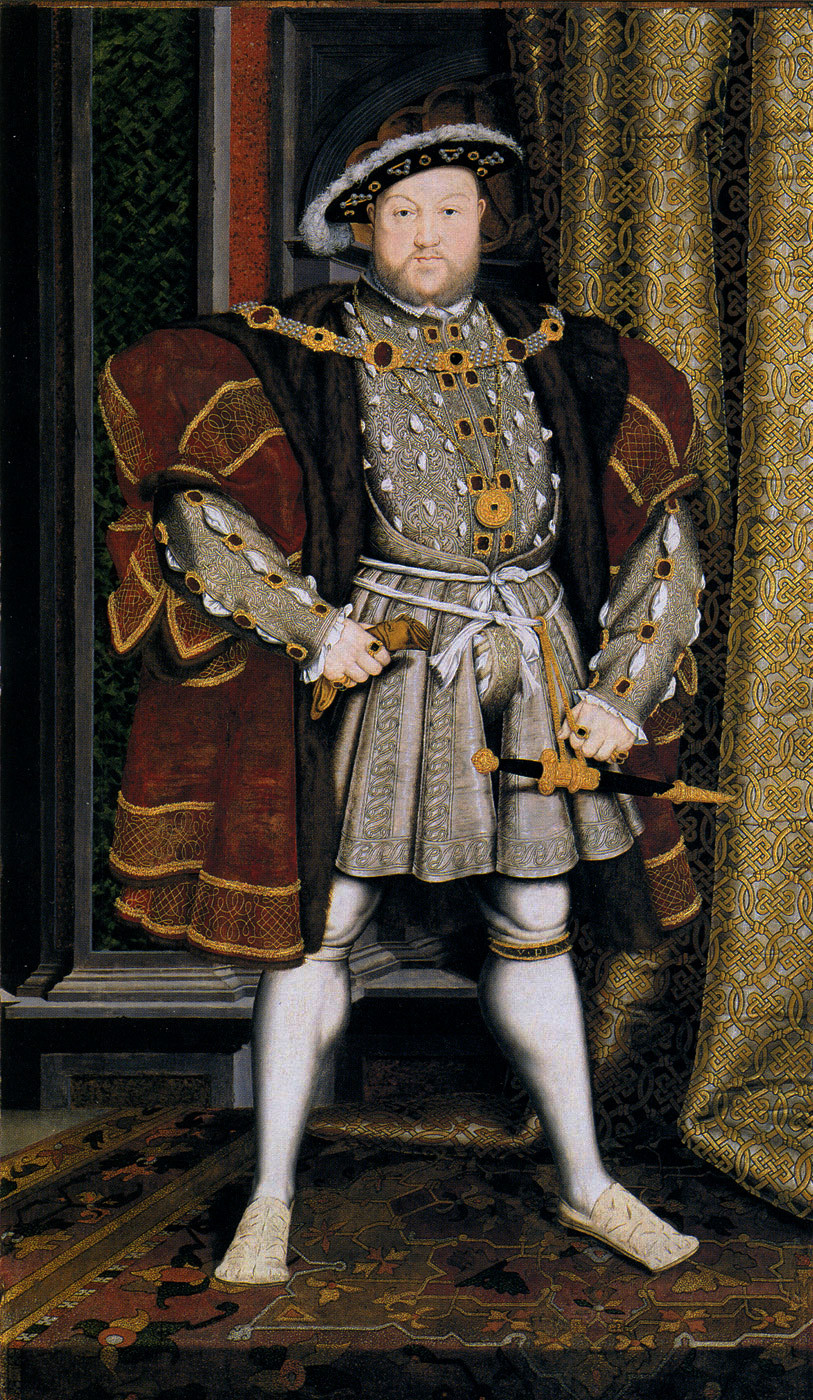 Henry VIII valued education, religion, arts, architecture, innovation and ostentation. He used his physical size to advantage -- he was 6'2" at a time when most men were considerably shorter -- and in many cases his portraits show him taking up most of the canvas. In the background of some portraits he was surrounded by the cultural sophistication reminiscent of imperial Rome.
Henry VIII valued education, religion, arts, architecture, innovation and ostentation. He used his physical size to advantage -- he was 6'2" at a time when most men were considerably shorter -- and in many cases his portraits show him taking up most of the canvas. In the background of some portraits he was surrounded by the cultural sophistication reminiscent of imperial Rome.
He excelled at sports and held jousting matches, wearing his gilded armor, satin and pearls, as a way of showing his wealth, strength and power to visiting dignitaries.
To promote his campaign for church reformation, he had pamphlets created and broadly distributed, and paid theatrical and minstrel groups to travel the land and portray Catholic priests as devils while he was the defender of the true faith. (Reminds me of the branding road show I once led for employees in various departments, but in my case the past was the devil and the new brand was the hero.)
In architecture, the exterior of buildings included hundreds of busts, the laurel-wreathed heads of emperors, imperial authorities and military heroes, suggesting these heroes were the foundation upon which King Henry's Tudor dynasty was built.
In art he was featured at the center of huge architectural structures in classical style, in at least one case receiving the water of life and the book of life directly from the angels, a clear reference to his religious persona as head of the Church of England with the divine right of kings.
Later in life, even after a jousting injury and other health conditions changed him dramatically -- and even though the noble king was responsible for about 70,000 executions -- the glorious persona that he had created still permeated. Fans of the Tudors television series may recall in the last episode just before Henry dies, he orders the portrait artist Holbein to change his latest, and accurate, depiction of declining, sickly Henry into the standing image of the strong, virile (note codpiece), magnificent king he wanted his people to see.
In part, I would say, the success of Henry's brand persona is that the powerful, charming, man's man image he created was something the citizens of his time wanted and respected in their king. It was an image that was easy to accept, and easy to follow because it met with their own values, and even in the face of horrible truths it was hard to let go.
Stay tuned for Part 4 of this series, next week: Elizabeth I
 Sharavogue recently won first place for historical fiction in the Florida Writers Association Royal Palm Literary Awards. You can purchase a copy from online booksellers and at the Book Loft on Amelia Island, FL. I will be presenting at the Amelia Island Book Festival Feb. 20-21.
Sharavogue recently won first place for historical fiction in the Florida Writers Association Royal Palm Literary Awards. You can purchase a copy from online booksellers and at the Book Loft on Amelia Island, FL. I will be presenting at the Amelia Island Book Festival Feb. 20-21.
Nancy Blanton is the award-winning author of Sharavogue, a historical novel set in 17th Century Ireland during the time of Oliver Cromwell, and in the West Indies, island of Montserrat, on Irish-owned sugar plantations. She has two more historical novels underway, as well as a non-fiction book about personal branding, Brand Yourself Royally in 8 Simple Steps. She also wrote and illustrated a children's book, The Curious Adventure of Roodle Jones, and co-authored Heaven on the Half Shell, the Story of the Pacific Northwest's Love Affair with the Oyster.